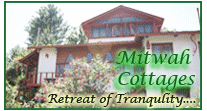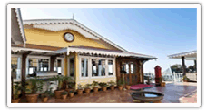|
|
|
| |
| |
Travel destination in India, Chamba |
|
|
| |
General Information about CHAMBA |
Chamba :
Area :55,673 sq. km.
Language :Hindi, Parhari
Altitude : 996 m.
State : Himachal Pradesh.
Temperature : Between 36 C in summer and 0 C in winter
STD Code : 018992 |
About Chamba
Chamba, the valley of milk and honey is known for its streams, meadows, temples, paintings, rumal ( handkerchief ) and lakes. Chamba has few rivals for its scenic beauty. Chamba is situated at an altitude of 926 metres. and spreads in the area of 24 km. There are three well defined ranges in the district - The Dhauladhar range, the Pangi or Pir Panjal range and Zanskar range. Located on the banks of the Ravi river the township resembles an Italian village fortress. Chamba's temples are mostly dedicated to Lord Shiva and Vishnu and are built of richy engraved stone. The town is also the base for Gaddi shepherds who, though nomadic in their way of life, return to Chamba periodically to stock supplies. Chamba is so sheltered by snow-clad mountain barriers that its monuments escaped destruction at the hands of invaders, which is why it still remains one of the best preserved heartlands of the Himalayan arts.
How To Reach
By Air : The nearest airport is Kangra 180 Km away
By Rail : The nearest narrow gauge railhead is Pathankot, 122 Km.
By Road : Well connected by road.
PLACES OF ATTRACTION IN CHAMBA
• Kailash Manimahesh (4,170 metres) : Mani-Mahesh is 28 kms. from Bharmour. During mela days efficient bus service is available upto Hadsar. This lake is supposed to be blessed by goddess Kali and protected by Lord Shiva. Thousands of pilgrims journey here to bathe in its sacred water, on the fifteenth day, following the festival of Janamashtami. A fair is held every year at this lake during the month of August or September. This is the must seen place in Chamba.
• Bhuri Singh Museum : This is a veritable store house of exquisite paintings of the famous Kangra and Basholi schools, as well as mass epigraphical material on the history of Chamba. the museum also has in it, wood carving, ancient manuscripts and Murals from Rang Mahal.
• Temples : Chamba has numerous ancient temples patterned in the style of local hill architecture, as well as Shikhara temples. The main groups of of these temples, Lakshminarayan, as well as most in the region are dedicated to Lord Shiva and Vishnu, built in the period between the 8th and 10th centuries A.D. The 'Chaturmukhi' image is a major highlight at the Hari Rai Temple. Some other important temples of Chamba are the Bansi Gopal temple, Shri Bajreshwari temple and Chamunda Devi temple. There is also a shrine dedicated to the memory of Rani Suhi who, as the legend, sacrificed herself, so water could to the town Chamba.
• Chaugan : A public promenade - a grassy maidan less than 1 km. in length and about 75 metres wide. It is a busy local trading centre for villagers from the surrounding hills. Each year Chaugan is the site for the Minjar procession ( Minjar Mela ). The fair lasts for a week and people attend the fair in the Minjar procession. The fair lasts for a week and people attend the fair in the local customs and colorful dresses, in a gay mood walking in the Chaugan where a large number of sports and cultural activities take place to commemoratethis occasion. On the conclusion of fair the "Minjars" are immersed into the Ravi river. It is also an establishment base for various exciting treks into the valley around.
• Bandal (78 km.) : A lush green place, this is the meeting point for the borders of Himachal Pradesh and Jammu & Kashmir.
• Katasan Devi Temple (20 km.): This is a very popular temple with the local people and commands imressive views.
• Sarol (8 km.) : A picnic spot in a land scaped garden on the left bank of Ravi river. A tourist can get lot of information and also pleasure in visiting the sprawling horticulture farm, with many species of Cirus plants, Sheep breeding farm, Poultry farm, Bee keeping farm and canning unit of Sarol.
• Hari Rai Temple : This temple is dedicated to Lord Vishnu and dates back to 11th century. It was probably built by Salabahana. This temple lies in the north-west corner of the main Chaugan, which had became the official entrance to the town by the end of 19th C. A steep path leads to the old Shitla bridge, which was constructed in the year 1894. The temple is built in Shikhara style and stands on a stone platform. The Shikhara of the temple is finely carved. This is one of the major old temples, which is away from the old township and the only one near the Chaugan.
|
|
|
| |
|
|
|







